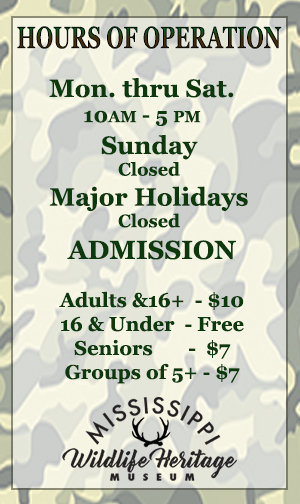by Gaila Oliver | Apr 13, 2017 | Bird Watching, Hunting, Shooting, sportsmen, Wild Turkey Hunting, wildlife
As is usual in many years, the early season turkeys were still flocked up, big gobblers with big gobblers, hens with hens, and young gobblers (“jakes”) with jakes. Yet every now and then, you get dealt a good hand.
I could hear the flock coming long before I saw them, and knew they were coming my way, so I didn’t call again, just got ready. They hove into view, but just as I had surmised from their calls, it was a flock of all hens, scratching through the leaves under the pecan trees on my ridge. I sat still as they worked closer and closer; I’m not sure what they had been feeding on the night before, but that flock actually got close enough for me to hear – excuse me – some of them, ah…breaking wind. I remember years ago reading about scientists being concerned about flatulence in cattle making holes in the ozone layer, or something like that. Those scientists would REALLY get worried if they knew that wild turkey hens have the same problem!
Then I noticed a much-darker bird toward the back of the flock, on the far side of it. Of all the luck, there was a gobbler with this flock of hens! My gun was across my lap, and I eased my thumb onto the safety.
The gobbler topped the ridge, and I could see a long beard; but this turkey had a peculiar gait: he seemed to be bobbing up and down. Well, I get accused of bouncing around a little when I’m singing, so maybe this tom was humming a tune as he fed: “Turkey In The Straw,” or more likely, “Just Before The Battle, Mother.” My gun was ready for action just as soon as I could get a clear shot within range.
Then the hens cleared out slightly between me and him, and I got a clear look that dumbfounded me: this gobbler had only one leg! He was hopping on one foot, balancing himself with the other wing, just like it was a crutch!
I watched with growing interest and sympathy, my gun forgotten. The old boy, for he was an older gobbler, by the length of his beard, was getting along very well with his handicap. He’d use his beak to sweep away leaves that he normally would have scratched away, then peck up the pecans or paw-paw seeds in a circle around where he stood, then he’d hop to another spot and work it over. The hens seemed to watch over him without being overly motherly, but it was obvious that a couple of hens were acting as lookouts in case some predator might be following the flock.
The crippled gobbler wasn’t as well filled-out as one would expect in a woods rich with mast, but he wasn’t as proverbially “Pore as Job’s Turkey,” though he’d had a dose of Job’s Luck. What had gotten the other leg? Now he was close enough for me to see that it was missing from the drumstick down, not just the foot. Did a wolf or bobcat ambush the tom, chomping down on a leg, only to have the gobbler wrench free, leaving just enough for the predator to fix turkey-foot soup? Had a nervous hunter called up the tom, then shot low? Maybe he had stepped into the steel jaws of a set trap, and had twisted his leg off to escape. Whatever, it had obviously healed over, for the gobbler was healthy, and the wingtip he used as a crutch was worn down from long use.
Twice in my life I have gone into the turkey woods on crutches, and a couple of other times with a walking cane. Twice I have been faced with the prospect of never walking again. It was with a growing admiration that I watched this gobbler hobble within gun range. The old boy was staying with the hens for company, because another gobbler would have made short work of him in a fight. If you’ve never heard a wild turkey fight, it’s a loud scrap: a dozen other males gather around and cheer for their favorite while a couple of toms go after it hammer and tongs! Any country boy who has been flounced by a turkey can testify to the power of their wings, spurs, and beaks. One can hear a wild turkey fight a quarter mile away in the woods.
The one-legged gobbler hopped out from behind a big pecan tree, 25 yards away. I never raised my gun. This turkey was too good a man for me to mess with him. He fed on across the ridge with the hens, and once stood erect to flap and half-gobble.
I saluted him, too. I hope Job’s Turkey lives to be 105!
by Gaila Oliver | Apr 6, 2017 | Bird Watching, Hunting, Shooting, sportsmen, Wild Turkey Hunting, wildlife
Here it is turkey season once again, the humbling season for most good hunters, sometimes with aforethought. After a half-century of hunting wild turkeys, I’m going to have to change my techniques. I think I’ve got to learn to set down to shoot turkeys.
Understand that wild turkeys DO something to your old Uncle Bob! I have fired well over a thousand rounds of shotgun shells at turkeys in my time, which averages out firing over 20 rounds a year at turkeys. While I have killed close to 250 gobblers, the average of four shells per turkey is somewhat misleading, for I really have at times killed a turkey with a single shot, like you see on TV. Plus, there have been several times when I killed two birds with one shot, unintentionally. Not that I haven’t tried to do that on purpose, it just hasn’t ever worked when I wanted it to. Anyhoo, my average is closer to six shots per turkey than four shots, and there were several years when I actually averaged over seven shells for each gobbler I brought home.
Point here is, I knew when I went to the woods that if I got a shot at a gobbler, it invariably would not be a fatal encounter unless the tom could be kept in gun range for another volley. Therefore, my set-up technique involved leaning against a big tree or large log that protected my backside (turkeys have a history of ambushing me!), sticking up a few paw-paw branches in front of me to break my outline, and removing any obstacles to foot-racing from the immediate area. I am not a hurdler. Matter of fact, the paw-paw branch blind needs to be light enough to run through with ease.
When the turkey is called into range (and closer is better, for me) I wait until he goes behind a tree within 25 yards before raising my gun, and when I do pull the trigger from that sitting position, I charge! Going from a sitting position to a dead run, with a pump shotgun at port arms, requires a great deal of supple effort and coordination.
I recall one Opening Weekend when it snowed six inches the night before and our camouflage jumpsuits stood out like sore thumbs, so we all took bedsheets to the woods as camo, tucked over us like barber cloths as we sat against our trees. I called up seven gobblers together that morning, who all took turns strutting and gobbling as they approached from a half-mile away. I was shaking like a leaf by the time they got within range, then I shot, jumped up, and charged. The bedsheet wound itself around my legs within two steps, and not only did I not get a single turkey, I broke an antique turkey call Mr. Floyd Hughes had given Big Robert years before.
Several years I have gone to the turkey woods with a wounded knee, which seriously limits one’s ability to rise charging with the initial shot. Once I crippled a big gobbler just enough that he couldn’t quite get out of gun range, despite my jumping up, shooting, falling down routine. That one took about nine shots, I believe.
There was one gobbler whom I caught a glimpse of in full strut as he approached through a deep draw. I lost sight of him, but had my gun up and ready when suddenly his old red head stuck up from the edge of the draw, like a submarine periscope. I dropped the barrel a couple of inches and fired, just as he ducked back down. My shot hit the ground and the brink of that draw exploded like a claymore mine. As usual, I was charging as I pumped, and when I hit the edge of the draw, the gobbler was still crouched down, eyes closed, completely untouched by number six shot, though obviously shell-shocked. It still took me seven shots to collect him!
Yesterday I spent a couple of hours working on the lawn mower, and noticed that my knees just don’t have the suppleness left to quickly charge turkeys after the shot. Numerous cartilage and ligament tears, operations, busted kneecaps, a broken thighbone and perhaps even old age, Lyme Disease, and the Greenhouse Effect have all taken their toll. Rising is an effort, even done slowly. There’s no question that I’m going to have to change my turkey hunting techniques.
Or my ammo: are claymores legal? What about blookers? Maybe I can hire an assistant to chase for me. Or take in an apprentice who wants to learn from The Master!

